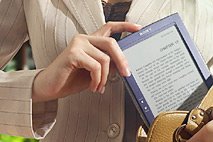What to expect from today's agents and editors
The Columbia Journalism Review covers much more than the state of the printed word in magazines and papers, or what takes up broadcast time and Web space in news outlets. The CJR has published articles as wide-ranging as an essay on the trials of editing gonzo journalist Hunter S. Thompson to a sobering look at the heavy lifting during the months after your book is accepted.
The Writer's League of Texas has its Agents and Editors Conference coming up, a meeting where my writing group practice, The Writer's Workshop, will have an exhibitor's table in the Capitol View Terrace at the Capitol Marriott Hotel. To set expectations correctly about winning an agent or editor's attention, I offer this pointer.
A CJR article titled The Education of Stacy Sullivan chronicles the struggle of this first-time fiction author, a reporter for The New York Times who turned her Kosovo war dispatches into a non-fiction book. (80 percent of all books published are non-fiction titles, by the way, accounting for the four-fold increase in published titles just since 1991.) Sullivan signed with an agent who'd read an article she'd written for Mirabella. Esmond Harmsworth got her a book contract with St. Martin's Press, a press that often takes a flyer on small books from first-time book writers.
As that Agents and Editors conference comes closer on my calendar here in Austin, I read the CJR's advice on agents closely:
These days, agents set the bar for entering the world of publishing. There was a time when getting an agent was the easy part, when even without a polished proposal, an agent might be willing to take a risk on a writer who showed promise and to develop an idea with the writer. And although agents such as these might still exist, they, like editors who actually mold a text, are becoming exceedingly rare.Agents are hired to look out for the business aspects of the writing craft. It's reasonable to expect them to focus on what will sell, and how to package it for a publisher's tastes. The surprise to Sullivan was how little St. Martin's was able to do to help her book become better.
This makes sense. If it is harder to find a publishing house to acquire a serious book, then agents, who depend for their livelihood on selling books to these houses, should be more reluctant to spend their time on tomes that may never find their place next to a Frappuccino at a Barnes & Noble café. Harmsworth is not alone when he says, “I don’t take on a writer unless we know exactly where the idea is going."
At a celebratory deal-signing lunch, Sullivan told her editor that she was hungry for a lot of editing. The editor said she hoped this would be the first of many lunches. As it turned out, throughout the next three years, Sullivan would see her editor only once more (by chance, as she stopped by St. Martin’s to drop off some photographs). For a book like Sullivan’s, not a high-priority acquisition, this was not unusual. What it meant, though, was that she was about to enter the solitary cave of book writing without so much as a pocket flashlight.In this, St. Martin's is hardly alone: Much like the movie business, books have a different life in the hands of independent and university press publishers. Those "producers" have less marketing clout, shorter runs, and less compensation for authors than the "studios" of major presses. But it seems these indie writers won't get left in the dark with their editing, either. The CJR article says that "there is nonetheless an overwhelming trend in publishing of editors who don’t really edit. And for the most part this is a function of the increasingly market-driven aspect of the business."
That's something to think about when an agent steers a project toward more money from a bigger publisher, one keen for massive markets. Which might be a good reason to skip the agents who only want to do the big deals — unless you really like being left alone to do your work.







